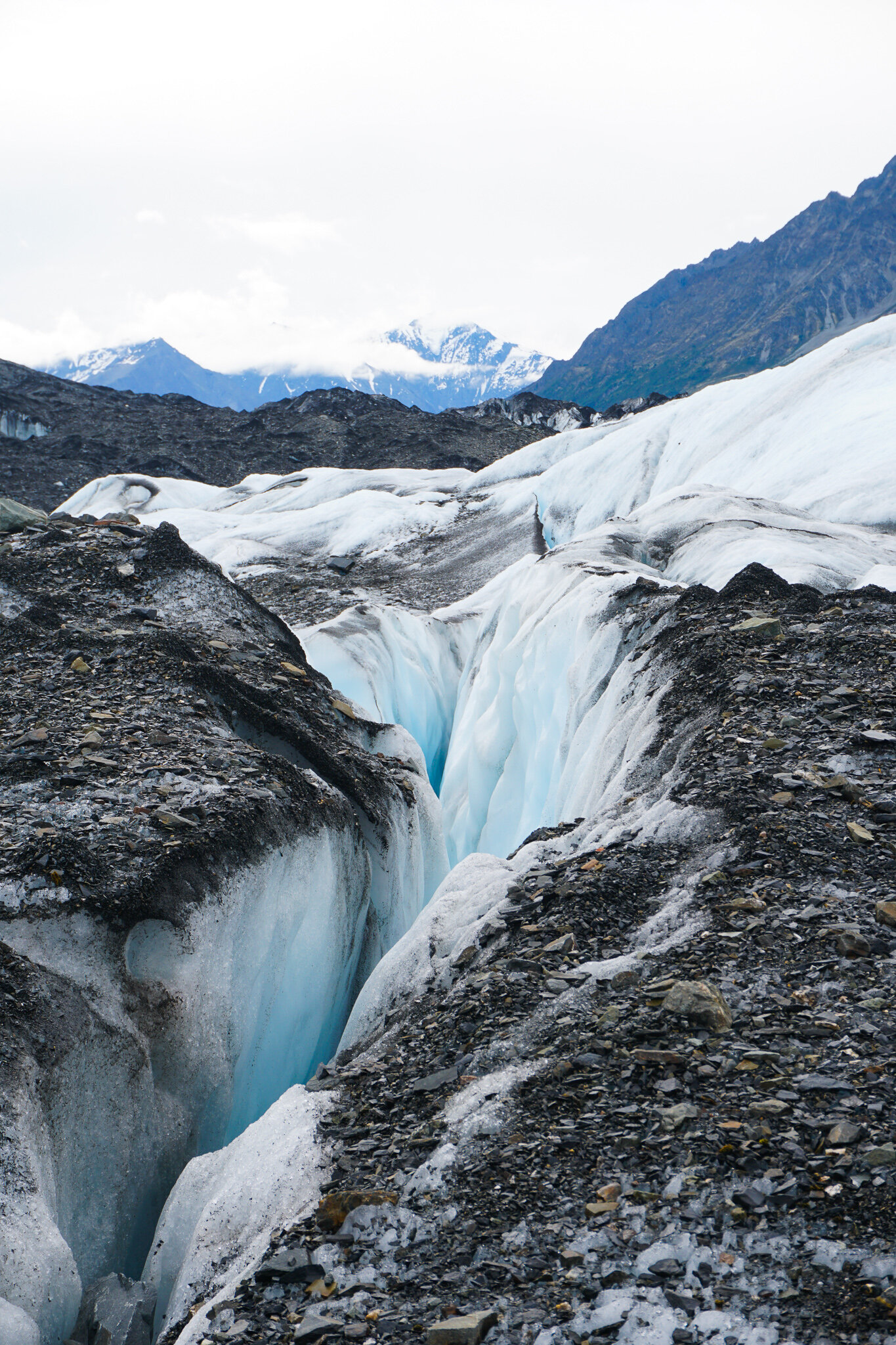Matanuska Glacier
10 am
We signed up for the Advanced Trek with Mica guides, a guiding company founded by the woman who I lived with in Haines, Alaska. She very kindly hooked us up with a day trip, a full day of glacier exploration: visiting crevasses, moulins, deep canyons, blue pools.
The result of spending many hours hiking across the incredible landscape of a glacier is thousands of photographs. In an attempt to create digestible posts, I have divided the day into four sections based loosely on time and landmarks we visited. From here on out, I will allow the images do most of the talking.
I’m generally enthusiastic but sometimes the littlest of things, often peculiar things, ignite new levels of excitement. One such little thing is glacier sediment.
The color, the texture, the smell, everything about it plays on some deeply rooted animal part of myself and I just needed to touch it. In the photograph above, I am explaining to our guide that I am so attracted to this glacier sediment I almost want to lick it. He kindly told me I wasn’t crazy and we agreed it must be the mineral density that calls to me so intensely. Then he told me a story of someone he knew who had a compulsion to eat dirt and we discussed women craving dirt during pregnancy. While I never did sample this sediment, our guide invited us to put it on our cheeks as protection from the sun.
Even more exciting than the glacier sediment was our first taste of glacier water. Drinking water from a natural source remains tip top of my list of things that bring me great joy. Whether a mountain river, a spring or glacial stream, the taste of cold clear water fills me with overwhelming gratitude every time. Gratitude and simultaneous grief, for many humans never get to know water like this: cold, clear, clean.
We stopped here, at the edge of the white ice, to put on our crampons. Our guide walked us though a couple safety measures and then began telling us about this special species of glacier moss, very sweetly nicknamed glacier mice.
These balls of moss, intentionally round in shape to make migrating around the glacier possible, are ancient and the only living species able to survive the harsh, frigid, barren, ever changing landscape of a glacier. Like other species of moss they are brilliantly green, a stark contrast to the dark rock and white ice of their habitat, and perhaps because they are called “mice”, they have this sweetness about them. Apparently, they also move around in a herd, migrating together. Some hypotheses credit the physics of the glacier and its climate in facilitating these movements patterns, I prefer to think they communicate with each other, it remains a mystery.























